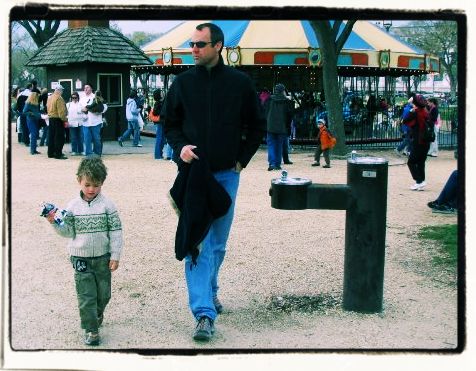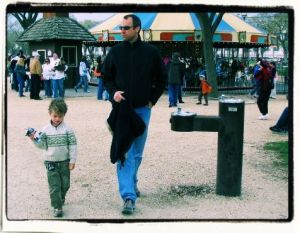So what am I working on next, in this series on mid-process novel revisions? Okay, confession. Maybe, while working on novel revision this week, I caught myself admiring Daniel Craig in Casino Royale. And maybe I rewatched Sense and Sensibilities, catching my breath for the 99th time over Colonel Brandon’s silent anguish of love. Maybe that had me thinking about hot main characters and romantic plots.
But then, just maybe, as I reread parts of my novel which has matured into its thematically-layered 4th or 5th draft, I stumbled upon a love scene between my main characters and cringed.
For a complete list of articles from this Novel Revision series, look below. But today it’s time to take on love scenes.
* * * * *
Love Draws Us In
If you’d asked me what this novel was about during first drafts, I would have called it a love story. It opens with the prattling of a toddler conceived in a love affair between the main characters. I feel a loyalty to that love spark, even as growth in the story has come to focus more on the layers of conflict and the larger theme of civilians avoiding violence during war.
That early feeling of falling in love with this broken main character is a central integrity to the story that doesn’t leave me. Key transitions in plot hinge on the moment they met, the moment they were drawn to each other, the moment they first, well, you know, and whether they are in love, and how that changes their original response to conflict. The love tension between my MCs is the fun part of the story, and a powerful inspiration that keeps me going from draft to draft.
Tough, my current revision process tells me.
How many first dates, even well described, would make it through the rounds of novel revisions? As I re-read these original scenes and decide how to edit love into the final drafts, I’m left wondering what role sex plays in literary fiction.
Purpose of the Sex Scene Fits the Purpose of the Genre
Sex plays different roles in different genres, of course, and thinking about the purpose of a genre helps to establish a guideline for the purpose sex scenes would serve in a book.
If I were writing romance fiction, the purpose of my sex scenes would be to evoke a romantic experience for the reader. For a mystery or thriller, sexual tension might accelerate the tension of a crime or create the more mysterious, romantic motivation for a detective or spy. For young adult lit, sexual activity is handled carefully to depict first experiences crossing the threshold from childhood to adulthood, and is therefore likely to focus on hesitation or anticipation, and small details a young person would remember of a first kiss or holding hands.
In each case, defining the work’s purpose is a good starting point in knowing what love scene details will advance a story without being off kilter or over the top.
What is the Role of Sex in Literary Fiction?
Literary fiction is less easily defined than some other genres, so I was left wondering at the role of sex in my WIP. In many cases, literary fiction is a hybrid with other genres, containing elements of romance, mystery, historical, coming of age, or science fiction. In Writing the Breakout Novel, Donald Maass addresses the effective crossover between literary and commercial fiction.
What is generally the case in all literary fiction and its hybrid/crossover varieties is that heat and passion can’t be the only purpose of love or sex in a story. Dang. I can’t just say my MC is a hottie and they are so in l-o-o-o-ve. The passion has to fuel or depict a larger purpose in developing character and advancing the conflict.
Of course, there are numerous literary best sellers where sex is not present. In his essay, Sex in Literature, Adrian Slatcher references Julian Barnes in saying “‘the author feels a commercial obligation’ to write about sex. But there have been several literary bestsellers to involve almost no sex at all.” In Colum McCann’s Let the Great World Spin, there is the non-sexual tension of his main character not sleeping with the prostitutes he befriends. In Alice McDermott’s Charming Billy, love is brotherly and era-appropriate dating scenes involve sitting on a blanket at the beach or arriving at a nanny’s house to pick her up for a date.
But sexual passion is fuel in much of literary fiction. Looking back on stories that continue to resonate as classics, it’s often a romance at the heart of the story that we remember. The fact that the romance between my main characters is important to my own interest in my WIP tells me that I need to give careful consideration while revising, for this to remain a strength in the final story.
Sex Reveals Character and Conflict
Literary fiction tends to be centered on character transformation, and sex can be a powerful symbol of where a character is in conflict. Sex is symbolic of inner conflicts of being trapped, captured, free, released, linked or united, and often serves as transformation in the plotline of internal conflict resolution. This can appear as outright sexual activity and its outcomes (think Hawthorne’s Scarlet Letter), desire that fuels action without explicit sexual activity (Edith Wharton’s Age of Innocence) or the state of desire restrained from action (Kazuo Ishiguro’s Remains of the Day).
Romantic desire can appear to stand alone as a character’s inner conflict, but is generally symbolic of something more. Even in novels like Pride and Prejudice, where the character’s internal conflict is resolved through acknowledging mutual love and marrying, that desire for love is integral to a larger theme of defending personal identity within the external conflict of England’s old property laws. Sex is an inherent theme of Michael Ondaatje’s The English Patient, but serves to create tension and release of tension and violation within a greater theme of war.
As much as love or sex can be used to signal transitions in inner conflict, it is also used in opposition. Sex is the external act of internal emotion, and tension arises if the external act (or lack of action) is in conflict with what the reader knows about inner emotion. Intense emotions are created when a reader knows the character’s desire but the character does not act on it, as in Kasuo Ishiguro’s Remains of the Day, which exudes a sensual tension partly because the butler never breaks his reserve.
Similarly, sexual behavior or loving actions can create a dramatic contrast to depict a character’s inner torment. In Kevin Powers’ The Yellow Birds, the scene when soldiers walk to a brothel while on leave is the antithesis of sexy, establishing through contrast how nightmarish their battle world has been and how dislodged the men are from emotion. The presence of sex without love or compassion is often symbolic of inner dysfunction, as Hemingway often used to signal the disembodiment of humanity after the shock of war. Reams of literary fiction include sex as sickness or sex in its dysfunctional state, such as The Kite Runner, The God of Small Things and The Color Purple.
Not Choreography
One of the simplest rules I’ve heard in knowing how to write sex in fiction is that effective sex scenes do not involve choreography. If you could replicate the movements and positions based on what is written, then it’s too much.
Like any other sensory details in successful fiction, sexual details have to serve the story, not just paint a picture. In that sense, I have been really resistant to say my main character is beautiful or describe the dramatic eyes I imagine for her love interest (yeah, that picture up top comes close). My story is not advanced by the characters being attractive. Beauty is only meaningful when it reveals what the character perceives as beautiful, or beauty in relief against themes of pain or darkness. Hot details need to be something more than just what we, as writers, find hot in a mate. As with any character traits, they should reveal the character’s fear or hope or history or greater desire and what keeps them from finding happiness. For my female character to notice scars on my male character’s knuckles is more meaningful (and less ridiculous) than to say he has nice hands.
Often, the novel’s sexual tension is best achieved in description of a nonsexual event. In Tea Obreht’s The Tiger’s Wife, the hottest sensuality comes not from deflowering of the mute wife, but in the nights she sneaks to feed the wild tiger meat from her husband’s stores.
But let’s say we do want to communicate that the scene was hot. The details to establish hotness still need to fit the novel’s theme, advance its conflict, and fit the voice. Only rare novels would benefit from Victoria’s Secret outfits and naming of body parts and positions. Words that are hot in imagination or real life — like lips and fingertips and more — often turn ridiculous in writing (and euphemisms can be even more ridiculous).
Successful sex scenes often evoke sensuality with words unrelated to the body or actual sex. Even in overtly sexual novels, like The English Patient, sexual details are often odd, like sexualizing the divot at the base of the woman’s throat. Hardy described blooming mushrooms in the woods rather than describe Tess’s virginal skin in Tess of the D’Urbervilles. Gabriel Garcia Marquez has his characters wait a lifetime to reach fulfillment in Love in the Time of Cholera, and description of that scene involves reference to constipation.
Revising with a Mind to What Makes Sex Scenes Work in Literary Fiction
It seems the key is to understand the purpose or message of your own novel, and know your story’s internal conflicts, to understand which kind of sex (or lack of) scene can work within your story. Sex is one of the choices my characters make in carving out their odd path toward resolving their inner conflicts, and their scenes together reveal love and hope and passion and parental intentions, but also dysfunction and imbalance and fear. Revising feels like coming at the scenes from an angle rather than head-on, working to deepen character and conflict, understanding how each detail reveals the progression in character transformation and not just heat.
* * * * *
What About You?
Have you been conflicted in writing or revising love in a story? What challenges or obstacles do you find? Or, what tactics have you found that help you stay productive?
If you want to read more on the subject, I admired this great post by English writer Isabel Costello: Sex Scenes in Fiction.
* * * * *
If you like this blog, be sure to subscribe using WordPress’s +follow option, or via email or RSS feed. I love to connect with like-minded readers and writers!
Recent posts:
- Motivation to Write: Keep Writing While on Vacation
- Friday Links for Writers 07.26.13

- My Summer Reading List 2013
- Writing Character: Say the Things We Never Say
Or, here is the current series on Novel Revision Strategies:





















